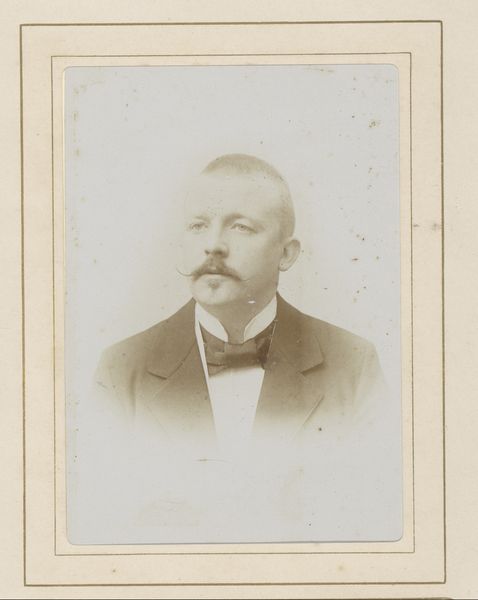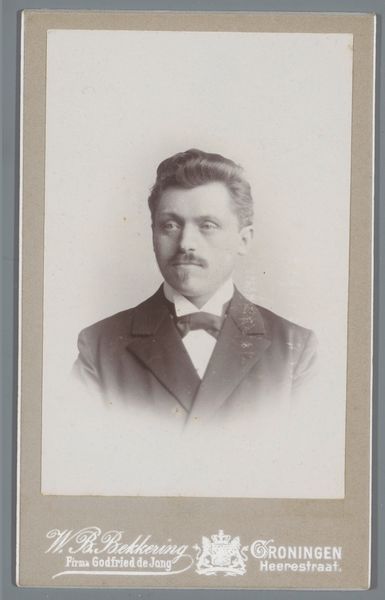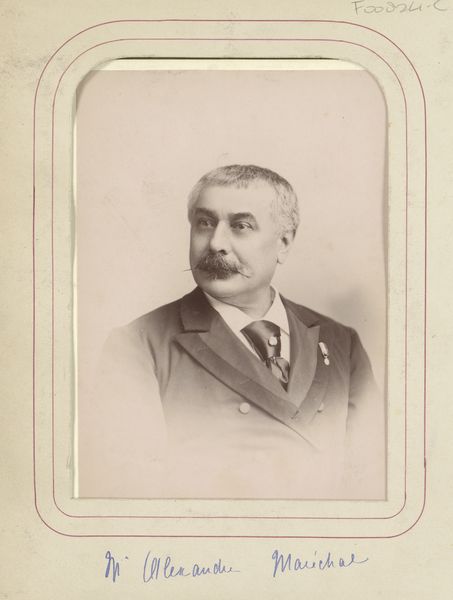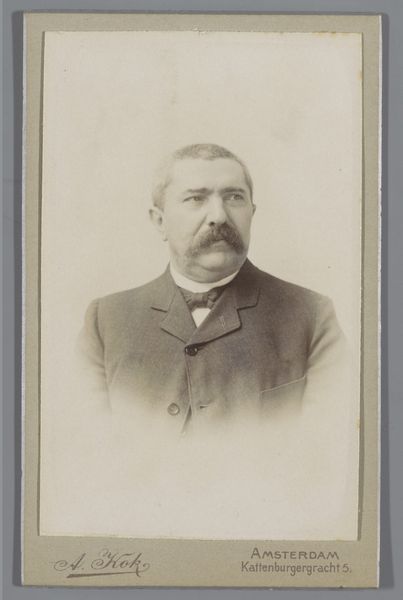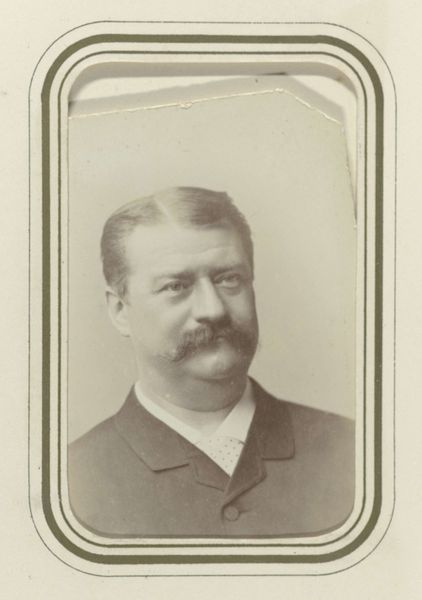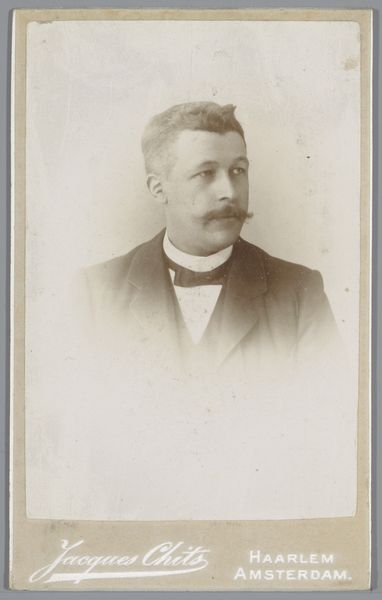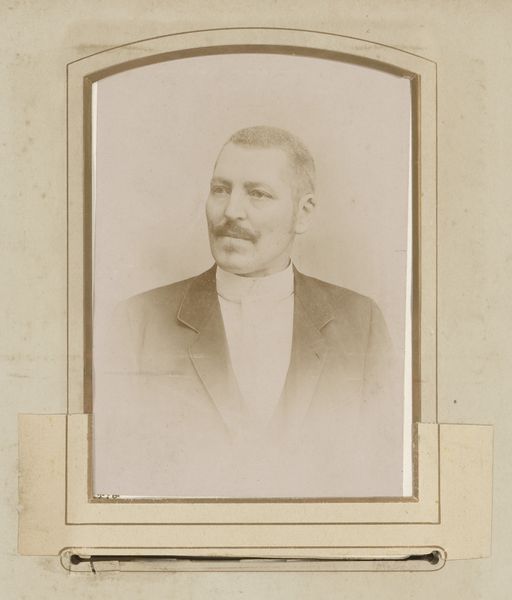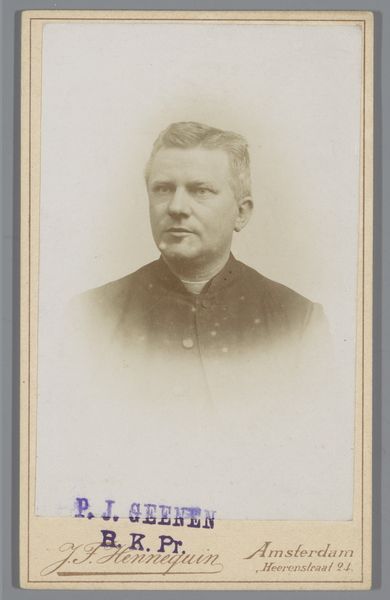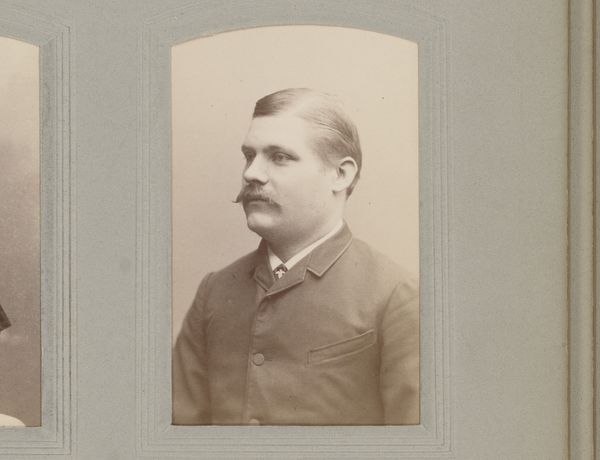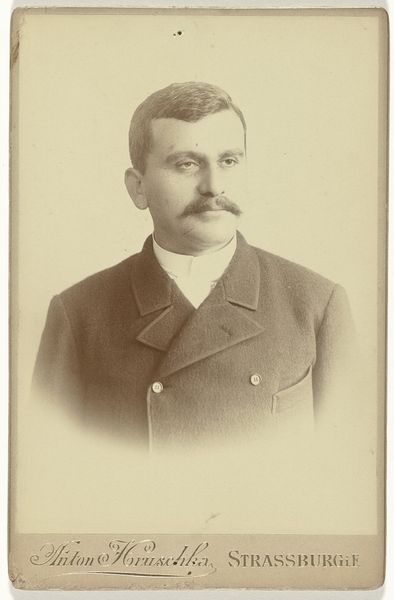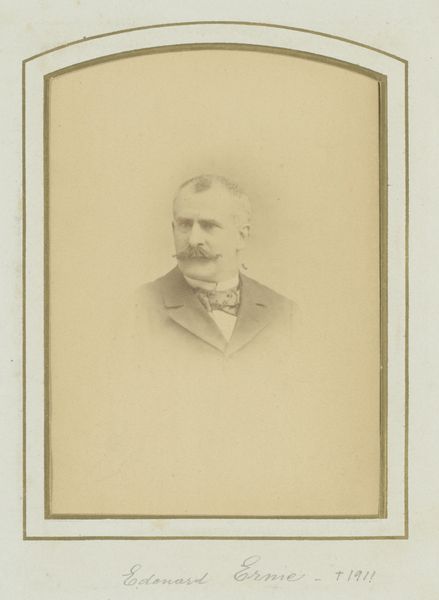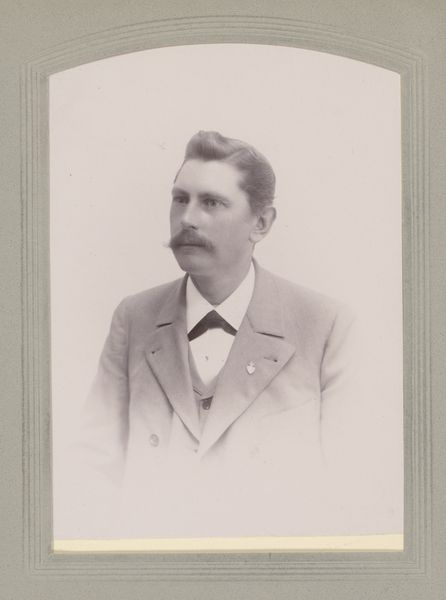
photography, gelatin-silver-print
#
portrait
#
caricature
#
photography
#
portrait reference
#
framed image
#
gelatin-silver-print
#
portrait art
#
gold element
Dimensions: height 137 mm, width 97 mm
Copyright: Rijks Museum: Open Domain
Curator: Standing before us is a gelatin-silver print dating from between 1889 and 1900 by Victor Daireaux entitled “Portret van Edouard Epaulard.” Editor: Immediately, I'm struck by the photograph's soft tonal range. It is like an apparition of a Victorian gentleman, caught between visibility and the verge of fading away. Curator: Indeed, that soft focus and limited palette are characteristic of photographic portraiture during that period. This aesthetic was deployed to capture and reinforce a specific construction of masculinity, power, and respectability. Editor: Semiotically, the portrait adheres to established tropes, the three-piece suit, a carefully cultivated mustache. There's a formality, almost a deliberate staging of self, that projects upward mobility, stability, and trustworthiness. Curator: Absolutely, but look closer. The subject, while conforming to those expectations, presents a challenge. We might even consider how his clothing performs certain established markers of belonging while gesturing toward other possibilities. In this way, clothing marks class and other socio-economic identifications. Editor: And yet there's something in his eyes that evades complete categorization, and is that a hint of a smile or is the slight contortion of the face a trick of the photographer? He may be striving for bourgeois conformity, but that very slight suggestion of asymmetry destabilizes any unified reading. It's a subtle yet insistent resistance that brings the photograph to life, no? Curator: A very close read, and one I agree with. It compels us to reconsider his position as subject and underscores photography’s complex relationship with ideas of truth, reality, and performativity. We might consider Foucault's work and its implications. Editor: Yes. A close examination really reveals how this carefully staged representation opens itself up. Thanks to this discussion, the ghostly Victorian hasn't disappeared. Instead, it seems to have turned to something unexpectedly contemporary.
Comments
No comments
Be the first to comment and join the conversation on the ultimate creative platform.
